
Spiral Jetty, Rozel Point, Corinne, UT 84307 Copy to clipboard
41.437636, -112.668812 Copy to clipboard
Before you go
Bring water: There are no drinking water facilities at the site. Bring plenty of water, especially in hot weather.
Bug spray: Essential during warmer months, as bugs can be abundant.
Clothing: Wear sturdy shoes for walking on rocky and salty terrain. Consider water shoes if you plan to explore the lake.
Gas & supplies: Fill up on gas and purchase food in Corinne, as there are no services for 50 miles.
Manage expectations: While the Spiral Jetty is a historically significant artwork, its remote location, rough road conditions, and lack of amenities may leave some visitors feeling underwhelmed. Much of the appeal lies in the surrounding desolate landscape and the sense of isolation. Visitors who appreciate land art and natural beauty are more likely to enjoy the experience.
Pets: Pet-friendly, but protect paws with booties or rinse them after exposure to salt.
Restrooms: No restrooms are available. Plan accordingly and consider stopping at Golden Spike Visitor Center beforehand.
Road conditions: The last 16 miles to the site are on an unpaved dirt road with sections of washboard gravel. While navigable in most vehicles, it is safest with a high-clearance or 4x4 vehicle. Drive slowly and carefully.
Safety: No cell service is available. Download offline maps or use GPS coordinates before departure. Let someone know your travel plans.
Weather check: Check conditions before visiting, as rain can worsen the dirt road and walking paths.
Best visit time
Sunset offers the most stunning views and lighting for photos, while mornings are quieter and cooler, especially in summer.
Spring (March-May)
Ideal for mild weather, pink water visibility, and fewer bugs.
Summer (June-August)
Visit early morning or evening to avoid extreme heat and bugs. Midday is not recommended.
Fall (September-November)
Cooler temperatures and beautiful sunsets make this a popular time to visit.
Winter (December-February)
The frozen lake and salt crystals offer a unique experience but prepare for freezing temperatures and icy terrain.
Seasonal changes
The water’s proximity to the Jetty changes dramatically with the seasons. In summer, the water is often farther from the Jetty, requiring a longer walk to reach it.
Directions
From Golden Spike National Historical Park
Directions: Take the signed dirt road west from the visitor center and follow it for 16 miles to the parking area near the Spiral Jetty.
Driving time: Approximately 30 minutes on an unpaved road.
From Corinne, Utah
Directions: Drive west on UT-83 for about 25 miles to Golden Spike Visitor Center, then follow signs for the Spiral Jetty for 16 miles on a dirt road.
Driving time: Approximately 1.5 hours, including the dirt road section.
Navigation tip
Do not follow Google Maps directions in the last 10 miles. Stay on the main gravel road and follow the signs for the Spiral Jetty.
Parking
A dirt lot is available at the end of the road. Follow the signs, as there are no turnarounds until the parking area.
What is it?
Spiral Jetty is one of the most well-known earthwork sculptures, as well as the most famous and influential work by sculptor Robert Smithson 1.
Shortly after the Spiral Jetty was constructed in 1970, it faced various challenges. People have wanted to destroy the project and put the land on which it lies into a different use. It was also submerged by the increasing levels of water 2 of the lake after completion. It remained under the water until the summer of 1993 when the water levels started to drop until 1995 when the piece became fully visible. It was again submerged by the rising water levels shortly after that until 2002. When Spiral Jetty re-emerged from the waters, it has remained visible since, but due to its proximity to the lake, it is sometimes submerged depending on the water levels.
The project is located on the northeastern coast of the Great Salt Lake, close to Rozel Point in Utah. It comprises mud, crystals, salt, and basalt rocks, expanding some 1500 feet long (460 meters) and 15 feet wide (4.6 meters), forming a counterclockwise coil protruding from the lake’s coastline. The work was donated in 1999 to the Dia Art Foundation.
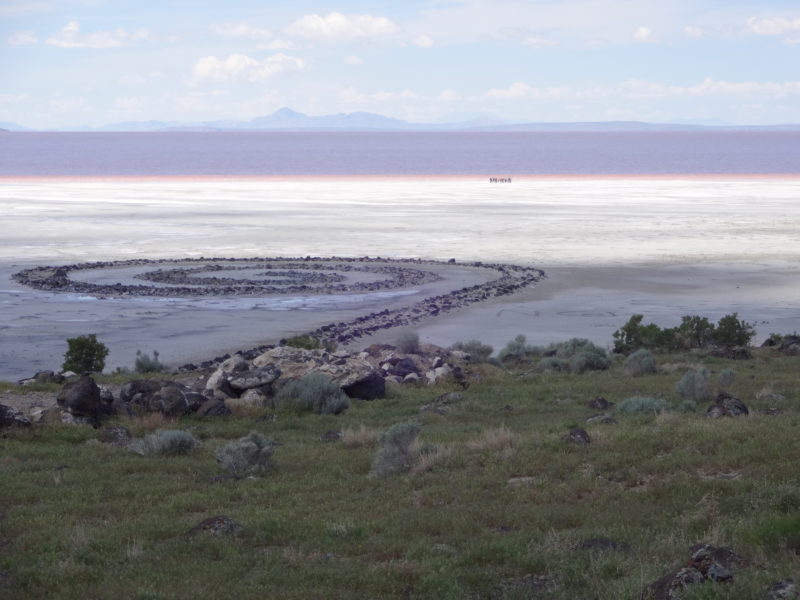
How Smithson picked the location
Smithson conducted extensive research when creating Spiral Jetty. He gathered articles, brochures, maps, clippings of the location of the project and surrounding oil fields. Smithson also researched the history and fluctuating levels of the Great Salt Lake, alongside information on Utah’s culture and sites of interest. It turned out that the red color of the lake’s water is one of the primary factors that attracted Smithson to the site. Along with the tiny bacteria and other factors that give the lake its bizarre color.
Smithson chose the location because of the blood-red hue of the lake water and its association with the primordial sea. The red color of the water is caused by algae and bacteria that thrive under a salty environment, especially the lake’s 27% salinity. This area of the lake (north arm) was separated from the freshwater sources when the causeway was built in the area in 1959 by the Southern Pacific Railroad 34. Smithson also liked this location because of its blatant anti-pastoral beauty and industrial remnants from the Golden Spike National Historic Site nearby, an old pier, and several unused oil rigs.
Smithson recounts how he heard about Rozel Point:
From New York City, I called the Utah Parks Development and spoke with Ted Tuttle, who told me that water in the Great Salt Lake, north of the Lucin Cut-off, which cuts the lake in two, was the color of tomato soup. That was enough of a reason to go out there and have a look.
Smithson was pretty familiar with the West, having come from the East Coast with his family earlier for vacations, then later trekking around the state. He frequently traveled to the West to gather specimens and images for his projects. Another great appeal that attracted Smithson to this location was the lake’s mirror-like feature, particularly in this sheltered region of the north arm of the lake. That meant that not only would he create a spiral, but the waters of the lake would act like an inverse spiral and a mirror simultaneously. The water of the lake could reflect the spiral, as well as reflect the surrounding site and the sun, turning the landscapes into themselves.
Video: Visiting the Spiral Jetty
3 min 17 sec
The original idea
The original idea
The original concept of the piece was a spiral with an island at the center. Together with an artificial island in the lake, it would have blended in with the lake’s topography, adding an extra rounded landmass to the already ten islands in the lake. The idea of an island at the center of the spiral was to be maintained throughout the many revisions the project underwent until nearly the end.
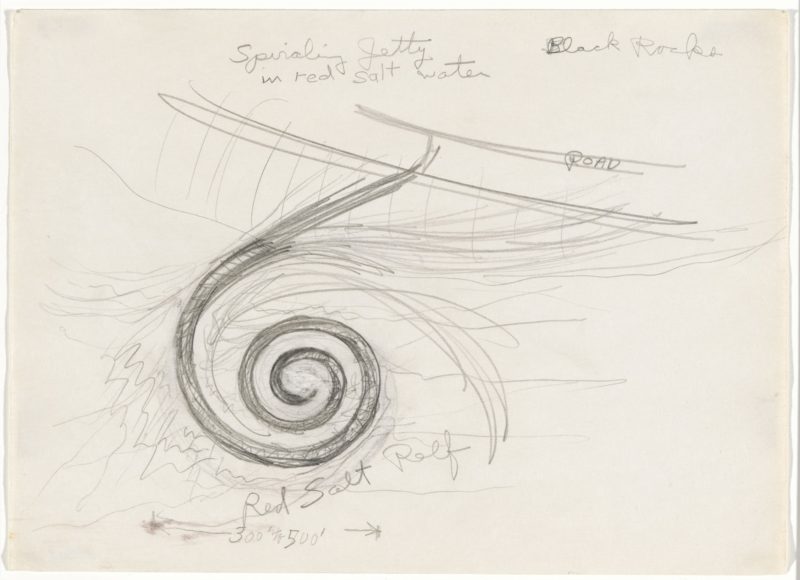
However, the spiral was always the main plan. Before the start of construction, Smithson spent a few weeks in Utah exploring the ideal site to construct his Earthwork. On March 10th, he finally submitted a Special Use Lease Application to the Division of State Lands at the Capitol Building in Salt Lake City. Part of the letter read:
“I am repeatedly submitting our…Special Use Lease Application for a period of twenty (20) years, and the total area will be approximately ten (10) acres. I offer $10.00 per-acre-per-annum rental totaling $100.00 per year.”
The letter also had an artistic intent:
This project will resemble a jetty in the shape of a spiral. The structure will be made of rock and gravel. The purpose of placing the rock on the mudflat area will be to induce salt crystals on the rock and gravel as incrustations that will develop over a period of time. This will contrast with the red color of the water. Its purpose is purely aesthetic, and it can be viewed from an airplane or the road.
– Robert Smithson Papers, Archives of American Art, roll 3833, frame 90.
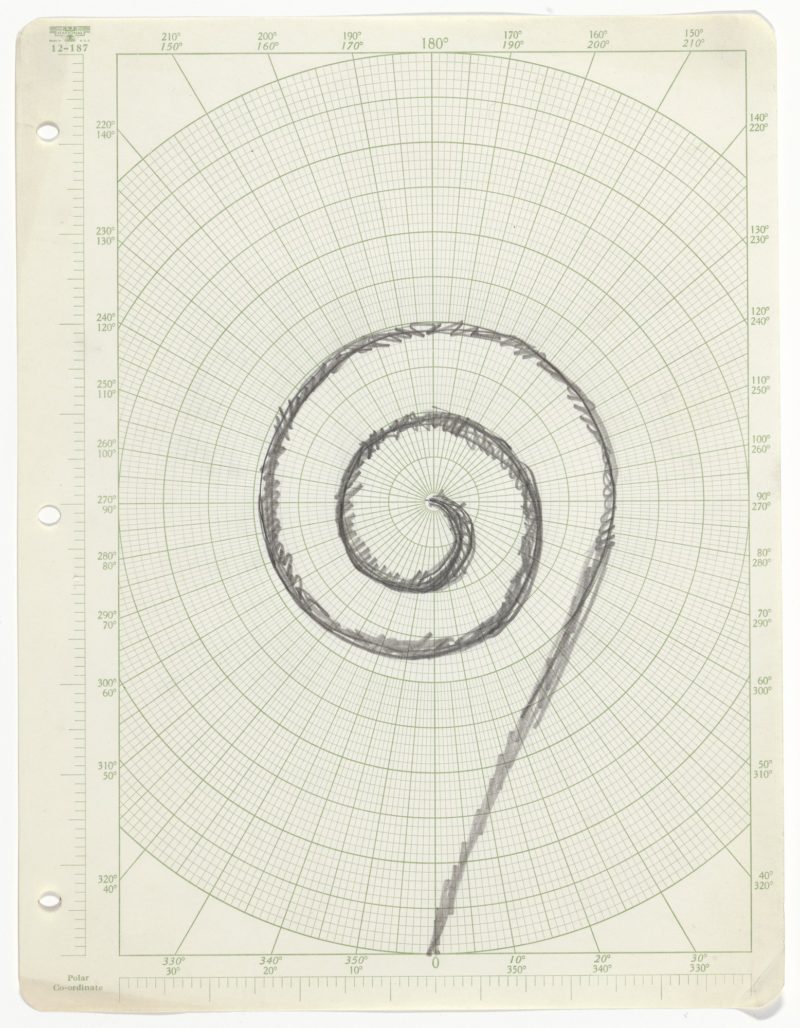
How the project was created
The artists occasionally supervised the construction of the project from a helicopter, at which he was quoted saying et in Utah ego, which a counterpoint to the pastoral Baroque painting by Nicolas Poussin titled et in Arcadia ego.
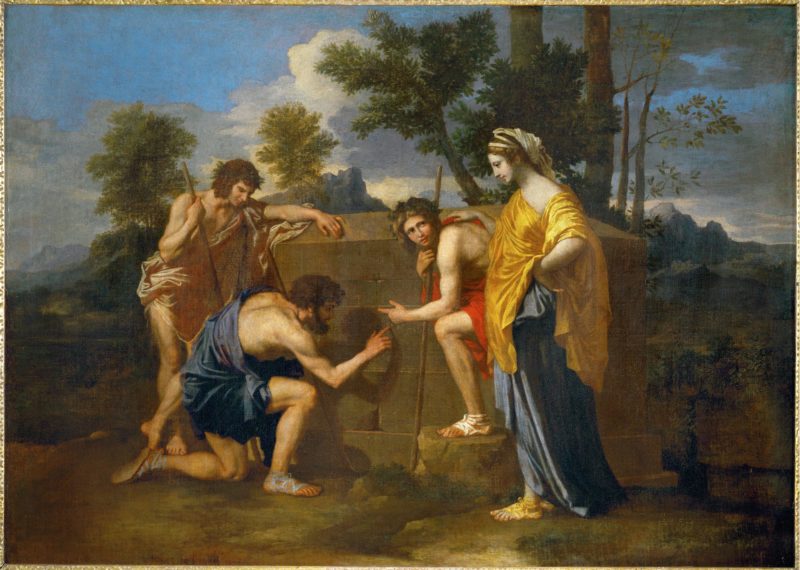
The rock used in constructing the piece was moved into the lake by Bob Phillips from nearby Ogden, Utah, who utilized two dump trucks, a huge tractor, alongside a front-end loader. The stones weighed about 6,650 tons.
The constructor almost turned down this unusual proposal from Robert Smithson, and he had to be convinced thoroughly by the artist. Smithson also had to acquire land rights and earthmoving equipment, which he never did with his previous pieces.
The construction of Spiral Jetty started in April 1970. The first phase took six days, where the project was like a draft. After contemplating the result for another two days, the artist directed the crew to reshape it into its final and present configuration.
The second and last phase of the project involved moving around 7,000 tons of basalt rock and took an additional three days. The contractor documented the entire construction process. His son even appeared in the 2017 PBS Antiques Roadshow program with images and a collection of files related to the creation of the project.
Speaking about the project and how challenging it was to use earth movers in the area, Phillips said 56:
It’s tricky working out on that lake. There are lots of backhoes buried on the site. When we got out there, he (Smithson) just took over. I don’t think he had done any geology work or anything on it. He just had in his mind what it should look like. He just had the eye for it. I assume it was the artist in him.
Video: PBS Antiques Roadshow
4 min 49 sec
Reactions
Reactions
At the time of its installation in 1970, there were very few references relating the Spiral Jetty to its precise location in Utah. Though the national art world covered the work extensively, local attention to the project was scarce. It took a whole year since its construction for an article to appear about the site of the piece.
However, the interest in the Spiral Jetty widened in the 1990s as the national art world regularly wrote about it as an Earthwork.
Critics argue that the spiral shape of the Spiral Jetty was influenced by the physical structure of the salt crystals that slowly coated the rocks used in construction within the lake, which creates a spiral-like shape.
Spiral Jetty is also a symbol of the artist’s fascination with the topography of the place. Smithson was genuinely interested in the ancient and physical formation of the area, emphasizing the changes imposed by human activities. This human interference in the landscape became even more evident to the artist when he visited the location for the first time and saw drilling machines and equipment, becoming obsessed with them. He was quoted saying:
A great pleasure arose from seeing all those in-coherent structures. This site gave evidence of a succession of manmade systems mired in abandoned hopes.
For Smithson, the topography was a place in continuous metamorphosis, resulting in a steady breakdown, again referencing entropic themes.
Video: Documentary
6 min 51 sec
Do you need to visit the Spiral Jetty?
Do you need to visit the Spiral Jetty?
Due to the remoteness of the work and frequent inundation by the lake’s waters, it is, more than other large-scale earthworks 7 created by Smithson, depended entirely on mass media for the distribution of its history and existence. And because of this, many commentators don’t see the need to visit the site physically.
Ann Reynolds, familiar with the work through photographs, film, texts, and drawings, considered visiting the site unnecessary. She wrote:
Because of its location, few of us have actually experienced it in this way . . . instead, we see it neatly reproduced as the preferred symbol … with its self-sufficiency still assumed to be intact.
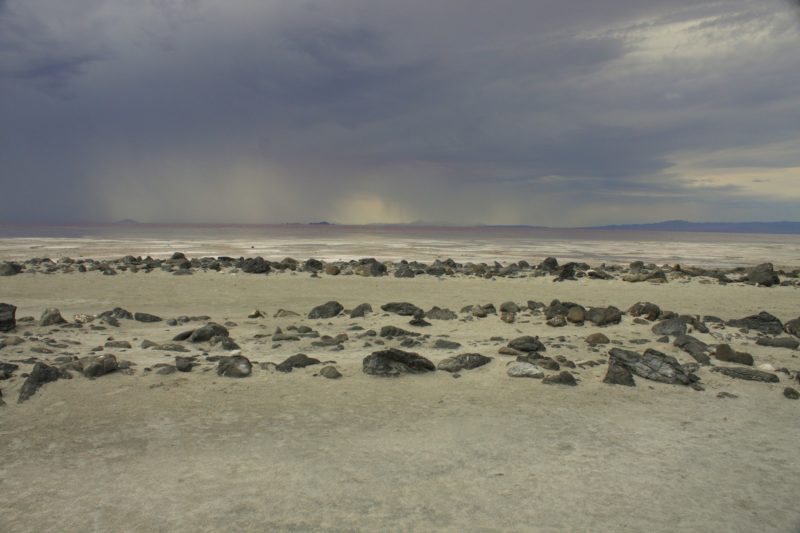
However, she visited the site later and realized that while she felt part of a familiar photograph, image, or film, the piece itself was different. She stated that when she arrived by car at the location, it seemed smaller than when visiting the work. One is required to separate from the preexistent description of the Spiral Jetty and, therefore, is forced to invent a story of one’s encounter, to create a fictional space for its experience to inhabit and a way of speaking an operating in relationship to it.
She realized that viewing it through media such as texts, film, and photographs only provided an alternate account of the piece. At the same time, the actual experience of the site offered a dissimilar, mental, and physical, three-dimensional, and sequential description. She follows up, saying that she had to abandon the idea that Spiral Jetty needed to refer to nothing outside itself that Site and Non-site collapsed into a singular, albeit vertiginous pattern.
Great Salt Lake, UT, United States
+1 212-989-5566
Open 24h
How the work changes throughout the year
With that in mind, it is evident that Spiral Jetty remained an ever-changing piece of artwork. It required one to view in relation to its surroundings as well as outside the frames and experimental restrictions imposed by these media. Visiting the site also means that the viewer has to drive there, usually from a distant area, and experience the whole journey.
Depending on the period of the year, visitors could find Spiral Jetty submerged in salt, which serves as a material index of the passage of time.
The salt only becomes an essential aspect of the piece after it reappears. The experience of visiting the site was changed, as one could sense the salty, crystal-enveloped basalt champing underfoot.
Video: Excerpt of 1970 Spiral Jetty movie
1 min 50 sec
Spiral Jetty was documented in a self-titled 32-minute color film.
Analysis
Analysis
In an interview in 1973, Smithson claimed that time, beauty, and mythos are all featured in Spiral Jetty, stressing that the work is open for independent interpretation and inviting the viewers to make their own analysis of the work.
Spiral Jetty articulates the artist’s fixation on entropy as well as the passage of time. Entropy is believed to mean the condition of the universe endlessly shifting towards chaos and even evolution in reverse. Smithson was comprehensively obsessed with this notion, and it is one of the central ideas of his work.
According to author Eugenie Tsai:
the site, a disrupted landscape bearing the remnants of deteriorated shed and some oil drilling equipment surrounded by ‘lurid’ red water, resembles an entropic landscape that simultaneously embodies a prehistoric past and science fiction future.
Therefore, the shape of Spiral Jetty was inspired by one of the most ancient symbols of art, which was an emblem of energy unfolding over some time, which the artists himself said comes from nowhere and goes nowhere in the lake.
This statement by Smithson suggests an association of the work with ancient and prehistoric myths. Robert Smithson’s interest in entropy as a barometer of chaos and order is further demonstrated in the collaborative, co-dependent as well as the ever-changing relationship of the piece with the surrounding water of the lake and the artist’s lexis when describing the landscape as shattered, fractured, corrosion.
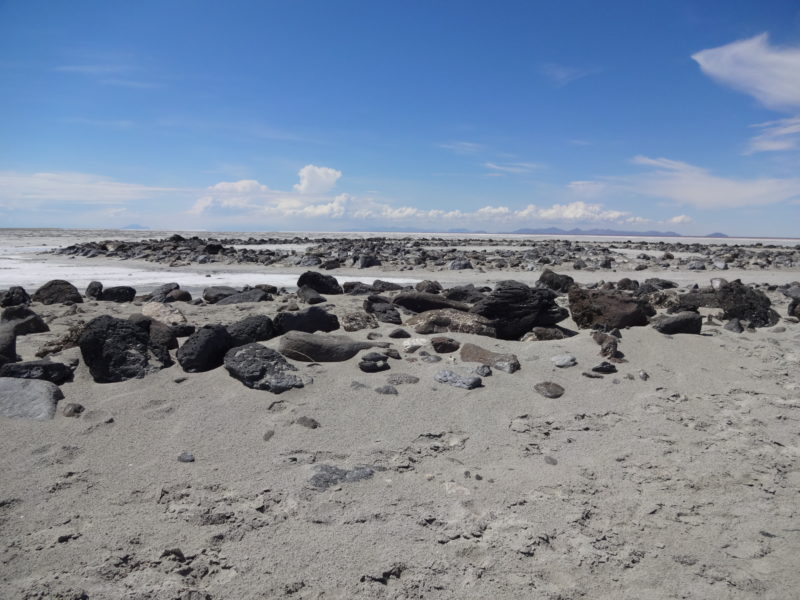
Conclusion
It is no secret that Spiral Jetty is one of the most popular earthwork pieces available for the public to view. Through Smithson’s creativity, restless research and investigations of multiple themes, media, artistic genres, and fields, he set a long-lasting background for subsequent generations of Earth artists.
His writings and films, alongside his radical dislocation of the site of production and the artist’s role, via his broad research on the topic of site-specificity 8, profoundly affected the dialogue around the post-studio condition. This reflected the connection between the process, the studio, objects, and exhibition-making and influenced artists several generations later.
